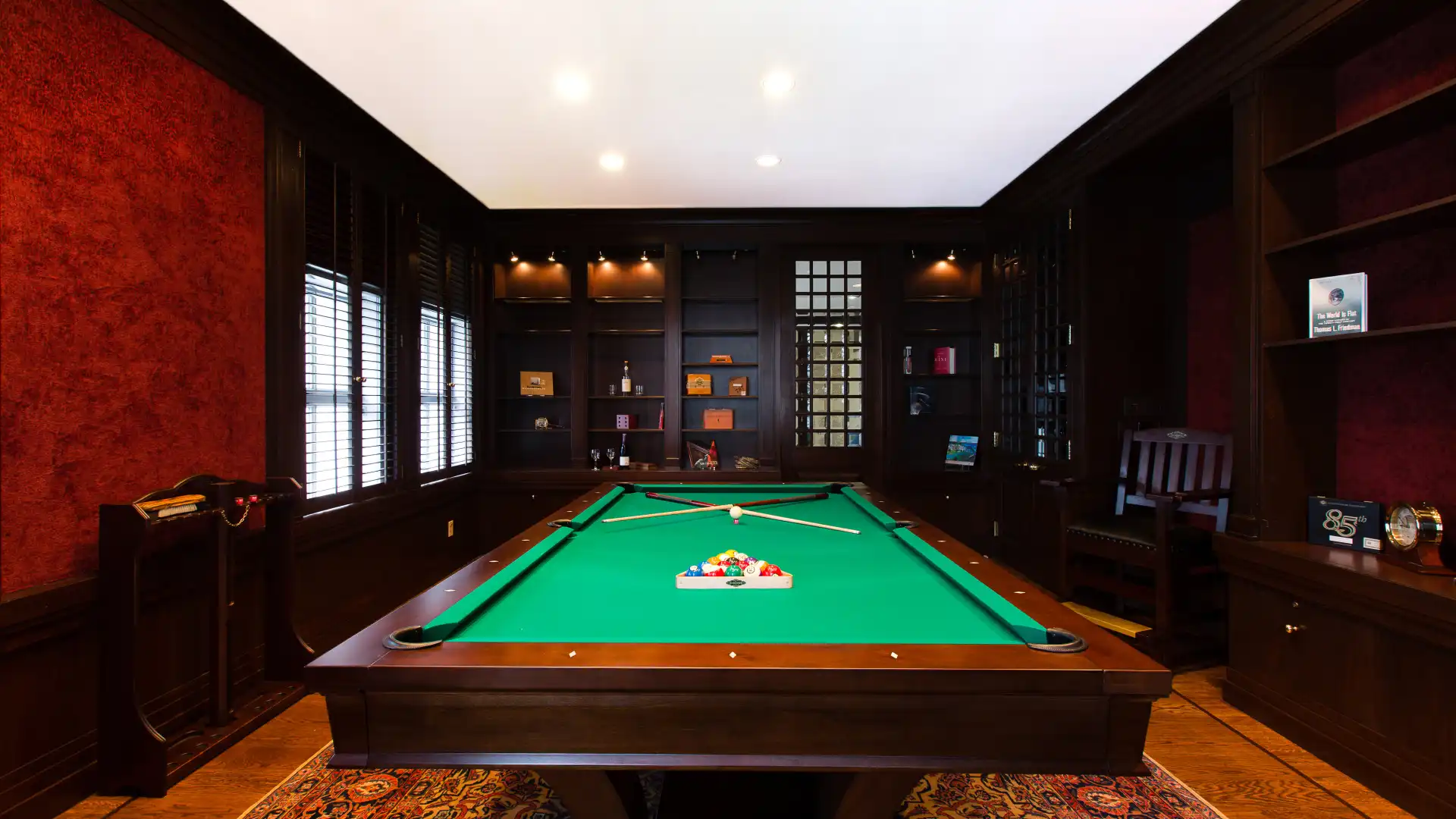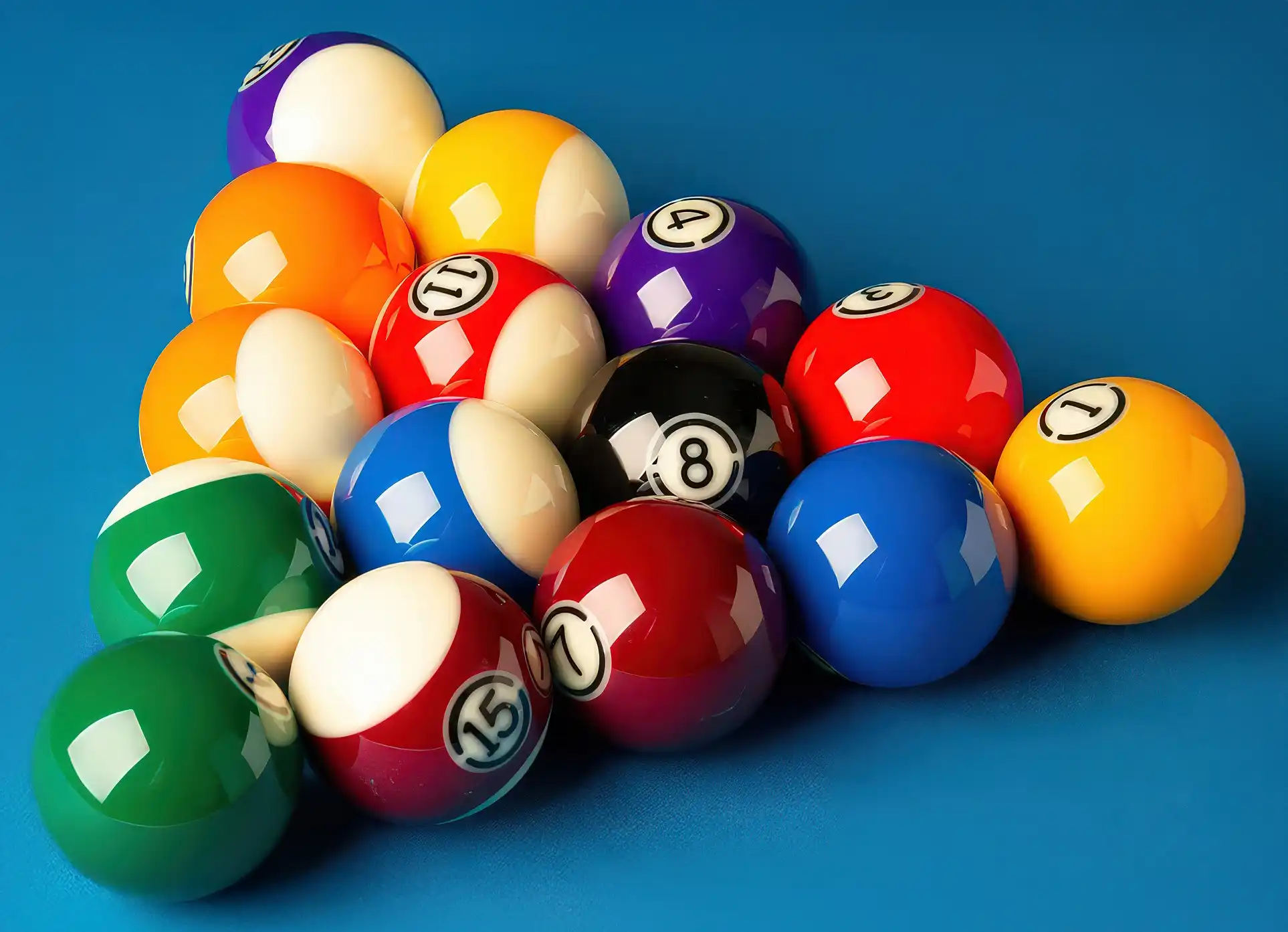Choosing the right pool table is an exciting step towards creating a fantastic entertainment space in your home. But before you fall in love with a specific model, there’s a crucial factor that underpins the entire purchase: your pool table room size. It’s not just about fitting the table in; it’s about ensuring you have the space for comfortable, enjoyable, and unrestricted gameplay. This guide will walk you through everything you need to know about pool table dimensions and the ideal room size to make an informed decision.
Introduction
The dream of owning a pool table often conjures images of thrilling games and friendly competition. However, the reality of a satisfying pool-playing experience hinges on one fundamental aspect: the dimensions of your room. Many buyers underestimate the importance of adequate space, leading to cramped play, frustration, and ultimately, a diminished love for the game. Understanding the relationship between your pool table and your room size is the cornerstone of a successful purchase. This guide, drawing on expert knowledge, aims to demystify these requirements, helping you select a table that not only fits but allows for the high-quality gameplay you envision. Ensuring the correct pool table room size is paramount for long-term enjoyment.
Understanding Pool Table Dimensions: A Size-by-Size Breakdown
Pool tables come in several standard sizes, each designed to suit different spaces and player preferences. The most common are 7-foot, 8-foot, and 9-foot tables. Knowing their playing surface dimensions is the first step in determining the right fit for your pool table room size.
Playing Surface vs. Overall Dimensions
It’s important to distinguish between the playing surface (the area inside the cushions where the balls roll) and the table’s overall footprint (including rails and frame). Always consider the overall dimensions when measuring your space, but the playing surface is key for calculating necessary cue clearance.
Standard Pool Table Sizes and Their Typical Playing Surface Dimensions
- 7-Foot Table (Bar Size): Often found in pubs, this table typically has a playing surface of 39 inches x 78 inches (approx. 3.25 ft x 6.5 ft). Ideal for smaller rooms or more casual play.
- 8-Foot Table (Standard Home/Pro 8): The most popular choice for residential use. The standard 8-foot playing surface is usually 44 inches x 88 inches (approx. 3.7 ft x 7.3 ft). An “Oversized” or “Pro 8” version might be slightly larger at 46 inches x 92 inches.
- 9-Foot Table (Tournament/Regulation): Favored for competitive play, this table features a playing surface of 50 inches x 100 inches (approx. 4.2 ft x 8.3 ft). This size offers the most challenging and rewarding experience for serious players.
It’s worth noting that “regulation size” refers to a table where the playing surface length is exactly twice its width (a 2:1 ratio).
| Table Size | Common Name | Typical Playfield Dimensions (Inches) | Typical Playfield Dimensions (Feet) |
| 7-foot | Bar Size | 39″ x 78″ | ~3.25′ x 6.5′ |
| 8-foot | Standard Home | 44″ x 88″ | ~3.7′ x ~7.3′ |
| 8-foot (Oversized) | Pro 8 | 46″ x 92″ | ~3.8′ x ~7.7′ |
| 9-foot | Tournament | 50″ x 100″ | ~4.2′ x ~8.3′ |
Ideal Pool Table Room Size: Ensuring Ample Pool Cue Clearance
Once you understand pool table dimensions, the next critical step is determining the minimum room size for your pool table. This is largely dictated by the need for adequate pool cue clearance – enough space to comfortably swing your cue without hitting walls or obstacles.
The “Cue Length Plus” Method
A widely accepted method for calculating minimum room dimensions is to add twice the length of your pool cue to both the length and width of the pool table’s playing surface. Standard pool cues are typically 58 inches long.
- Benefit/Spec 1: Freedom of Movement: Sufficient clearance allows for a natural stance and unimpeded stroke, crucial for accurate shots.
- Benefit/Spec 2: Game Enjoyment: No more awkward shots or “jacking up” the cue simply because a wall is in the way.
Minimum Recommended Room Sizes (Using a Standard 58-inch Cue)
- For a 7-foot pool table room size: Approximately 13 ft x 16 ft.
- For an 8-foot pool table room size: Approximately 13.5 ft x 17 ft.
- For a 9-foot pool table room size: Approximately 14 ft x 18 ft.
Considering Shorter Cues
If your space is slightly restricted, using shorter cues (e.g., 48-inch or 52-inch) can be an option. This will reduce the required room dimensions slightly, but it may affect gameplay for some players or shots. For example, a 7-foot table with a 48-inch cue might only need around 11 ft x 14 ft. Understanding this flexibility can be key.
| Table Size | Approx. Playfield | Min. Room with 58″ Cue | Min. Room with 48″ Cue |
| 7-foot | 3.25′ x 6.5′ | ~13′ x 16′ | ~11′ x 14′ |
| 8-foot | 3.7′ x 7.3′ | ~13.5′ x 17′ | ~12′ x 15′ |
| 9-foot | 4.2′ x 8.3′ | ~14′ x 18′ | ~12.5′ x 16.5′ |
The Perils of an Undersized Pool Table Room Size
Attempting to squeeze a large pool table into an inadequate pool table room size can lead to significant issues that detract from the joy of ownership.
- Restricted Play: Players may constantly bump into walls, be unable to take certain shots, or have to use awkward stances.
- Damage Risk: Cue sticks can damage walls, furniture, or even the table itself.
- Reduced Enjoyment: The frustration of a cramped space often leads to the table being used less frequently.
- Aesthetic Imbalance: A table that’s too large can make a room feel cluttered and unbalanced.
Prioritizing a comfortable playing environment over simply owning the largest table possible is crucial for long-term satisfaction.
Measuring Room for Pool Table: A Step-by-Step Assessment
Accurately measuring your room is essential. Don’t guess when it comes to your pool table room size!
- Measure Usable Space: Use a measuring tape to find the length and width of the actual usable floor space.
- Note Obstructions: Identify any permanent features like columns, fireplaces, built-in shelves, or door swings that could interfere with cue movement.
- Apply Calculations: Use the “Cue Length Plus” method (playing surface dimensions + twice your cue length on each side) to see what size table your room can comfortably accommodate.
- Consider Vertical Space: Ensure adequate ceiling height, especially if you plan to install overhead pool table lights.
Visualize the Footprint
A helpful tip is to use painter’s tape or cardboard to outline the overall dimensions of your desired pool table on the floor. This gives you a real-world sense of the space it will occupy and the clearance around it. This step in measuring your room for a pool table can prevent costly mistakes.
Exploring Small Pool Tables and Alternative Options for Compact Spaces
If your dedicated pool table room size is limited, don’t despair! There are excellent options for smaller spaces.
- 6-Foot Pool Tables: Often called “small bar box” tables, these are a good compromise when a 7-foot table is too large.
- Mini Pool Tables/Tabletop Versions: Ranging from 20 to 54 inches in length, these are great for casual fun in very restricted areas.
- Folding Pool Tables: Ideal for multi-purpose rooms, these can be folded and stored when not in use.
- Bumper Pool Tables: These often have a smaller, sometimes octagonal, design and offer a different style of play.
These small pool tables ensure that even those with less square footage can enjoy the game.
Beyond Room Dimensions: Other Vital Factors in Your Pool Table Selection
While pool table room size is a primary constraint, other factors influence the best choice for your needs:
- Intended Use: Is it for serious practice, family fun, or occasional entertainment? Professionals or serious players usually prefer 9-foot tables, while an 8-foot or 7-foot table might be perfect for recreational use.
- Skill Level: Beginners might find smaller tables less intimidating, while experienced players often seek the challenge of larger surfaces.
- Budget: Larger tables generally cost more due to materials and construction.
- Aesthetics: The table should complement your room’s decor and feel like a natural fit, not an oversized obstruction.
Considering these aspects alongside your pool table room size will lead to a more satisfying purchase.
FAQ
Q: What is the most important factor when choosing a pool table size?
The most critical factor is your pool table room size. You need enough space around the table for comfortable pool cue clearance, typically at least 5 feet around all sides with a standard 58-inch cue. For specific Room Size Specifications, it’s always good to consult detailed charts.
Q: Can I use shorter cues if my room is small?
Yes, using shorter cues (e.g., 48 or 52 inches) can allow you to fit a slightly larger table into a smaller room. However, be aware that this might affect gameplay comfort and performance for some players, especially on more difficult shots.
Q: What are the typical pool table dimensions I should know?
The three main sizes are 7-foot (approx. 3.25′ x 6.5′ playing surface), 8-foot (approx. 3.7′ x 7.3′ playing surface), and 9-foot (approx. 4.2′ x 8.3′ playing surface). Remember the overall table dimensions will be larger.
Conclusion
Choosing the right pool table is a significant investment that promises years of enjoyment. However, this enjoyment is directly tied to ensuring your pool table room size can comfortably accommodate not just the table, but the players around it. By carefully measuring your space, understanding pool table dimensions, accounting for pool cue clearance, and considering alternatives like small pool tables if needed, you can make an informed decision. Don’t compromise on playable space; the quality of your game depends on it.
For expert advice on selecting the perfect pool table for your space and to explore a wide range of high-quality options, contact Pool Table Store today or visit our showroom in Mississauga.





